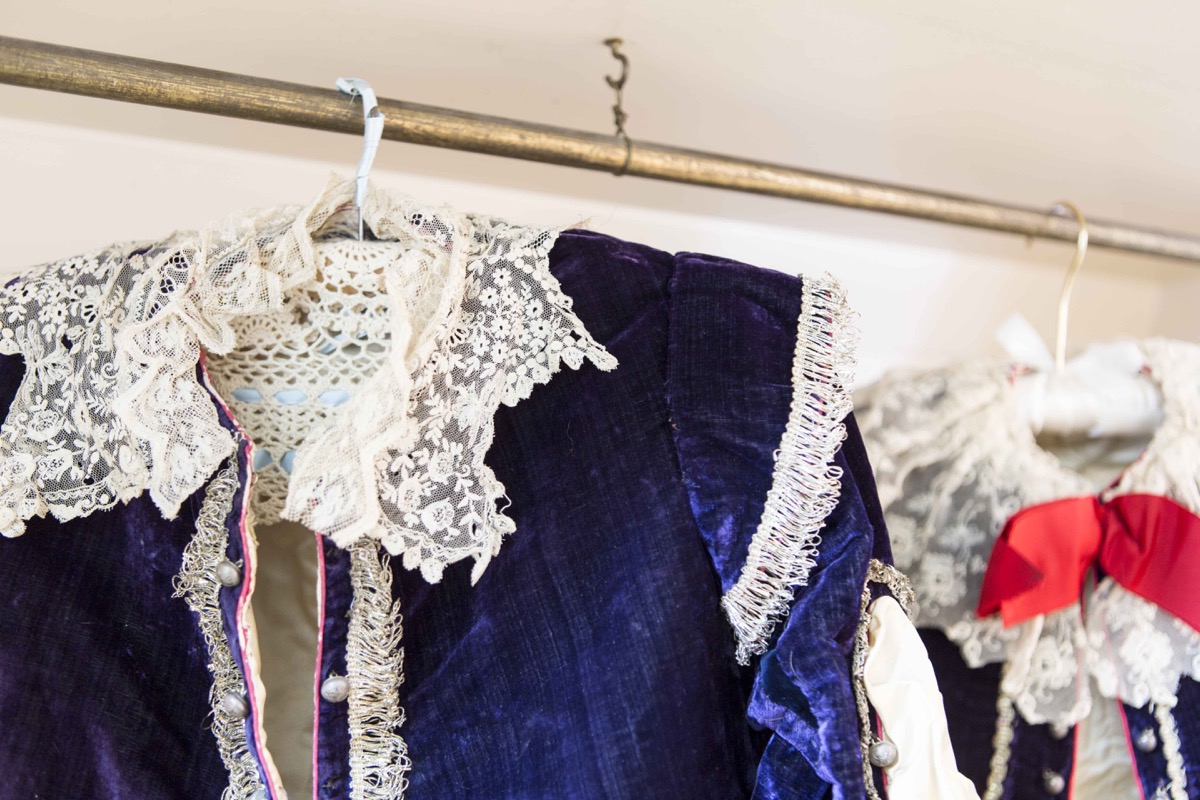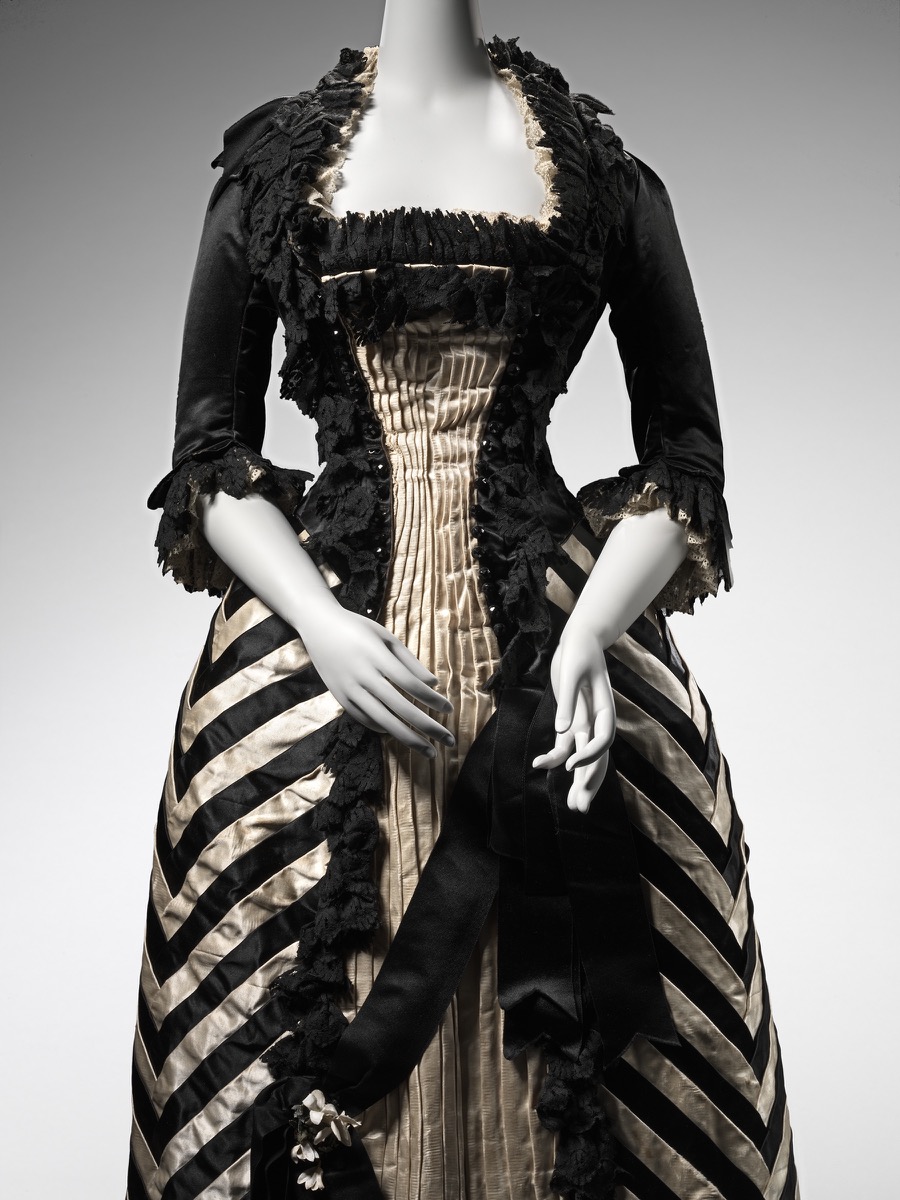The Fashion Trunk Show
The National Trust of Australia (Victoria) has an incredible costume collection that spans many years of wear. These garments provide extremely valuable insight into past fashion trends, manufacturing techniques, society and sustainability.
About the Program
Savour a glimpse into women’s lives through time with the Fashion Trunk Show. The National Trust of Australia (Victoria) is the custodian of a significant and vast collection of fashion dress dating from the 1830s through to the 1970s. One of our trained educators will bring a curated selection of these garments into your classroom for a hands-on analysis, where students discover the impact of changing technologies and fashions in garment creation and explore what those changes meant in terms of sustainability and society.
Curriculum Links
| Subject | Strand | Sub-strand | Content descriptions | Students will… |
|---|---|---|---|---|
| Design and Technologies | Technologies and Society | the impacts of innovation and the development of technologies on designed solutions for ethical considerations including sustainable living | Analyse the impact of changing technologies for the creation of garments from 1800-present and how these changes affected society and the environment. | |
| VC2TDE8S02 | ||||
| Creating Designed Solutions | Investigating and Defining | explain needs or opportunities for designing, and investigate and select tools, materials, processes and components to create designed solutions | In the teacher resource pack (provided upon confirmation of booking), design a garment using inspiration from historical technologies, styles and components. | |
| VC2TDE8D01 | ||||
| History | Historical Concepts and Skill | Chronology | sequence significant events, individuals, ideas and developments chronologically to explain continuity and change and causes and consequences | Explore continuity and change in styles and trends through time. |
| VC2HH8S02 | ||||
| Using historical sources | explain the perspectives, beliefs, values and attitudes of people and groups based on evidence from a range of sources | Explore how a garment can represent the societal restrictions of a certain time period based on silhouette and materials used. | ||
| VC2HH8S05 | ||||
| Continuity and Change | explain continuity and change | Explore how garments changed over time, whereas some aspects remained the same. | ||
| VC2HH8S07 |
| Subject | Strand | Sub-strand | Content descriptions | Students will… |
|---|---|---|---|---|
| Design and Technologies | Technologies and Society | the impacts of innovation, enterprise and emerging technologies on designed solutions for ethical considerations including sustainable living | Analyse the impact of changing technologies for the creation of garments from 1800-present and how these changes affected society and the environment. | |
| VC2TDE10S02 | ||||
| Creating Designed Solutions | Investigating and Defining | analyse needs or opportunities for designing; develop design briefs; and investigate, analyse and select materials, systems, components and tools to create designed solutions | In the teacher resource pack (provided upon confirmation of booking), design a garment using inspiration from historical technologies, styles and components. | |
| VC2TDE10D01 | ||||
| History | Historical Concepts and Skills | Chronology | sequence significant events, individuals, ideas, movements and developments chronologically to analyse continuity and change, and causes and consequences | Explore continuity and change in styles and trends through time. |
| VC2HH10S02 | ||||
| Using historical sources | analyse the perspectives, beliefs, values and attitudes of people and groups based on evidence from a range of sources | Explore how a garment can represent the societal restrictions of a certain time period based on silhouette and materials used. | ||
| VC2HH10S05 | ||||
| Continuity and Change | analyse continuity and change | Explore continuity and change in styles and trends through time. | ||
| VC2HH10S07 |
| Unit and area of study | Key knowledge or skills | Students will... |
|---|---|---|
| Unit 1: Sustainable Product Redevelopment AOS1 | The environmental, economic and social impacts associated with the origin/source, manufacture, use and disposal of products. | Understand how garments were manufactured both pre- and post- industrialisation and how this process impacted the landscape, community and climate. |
| Approaches used by designers to incorporate sustainability practices in product design. | Discover the sustainable methods of women in the 19th and early 20th centuries to mend, redesign and re-wear garments for many years as fashions changed rather than buying new. | |
| Creative and critical design thinking techniques. | Analyse garments from the past using a criteria and critical thinking skills. | |
| Analyse the sustainability of an existing product. | Analyse how the garments shown rank on sustainability when thinking about length of use, method of manufacture, materials used and environmental impact. |
Program Details
Monday – Friday during school terms.
1.5 hours
Minimum 15, maximum 30 students.
3 sessions per day.
$12 per student.
Click here to access the Task Risk Assessment document.
Teachers will receive a detailed resource pack that includes suggested pre- and post-incursion activities upon booking.
To book, complete the Online Booking Form. For enquiries, email [email protected] or phone (03) 9656 9889.




